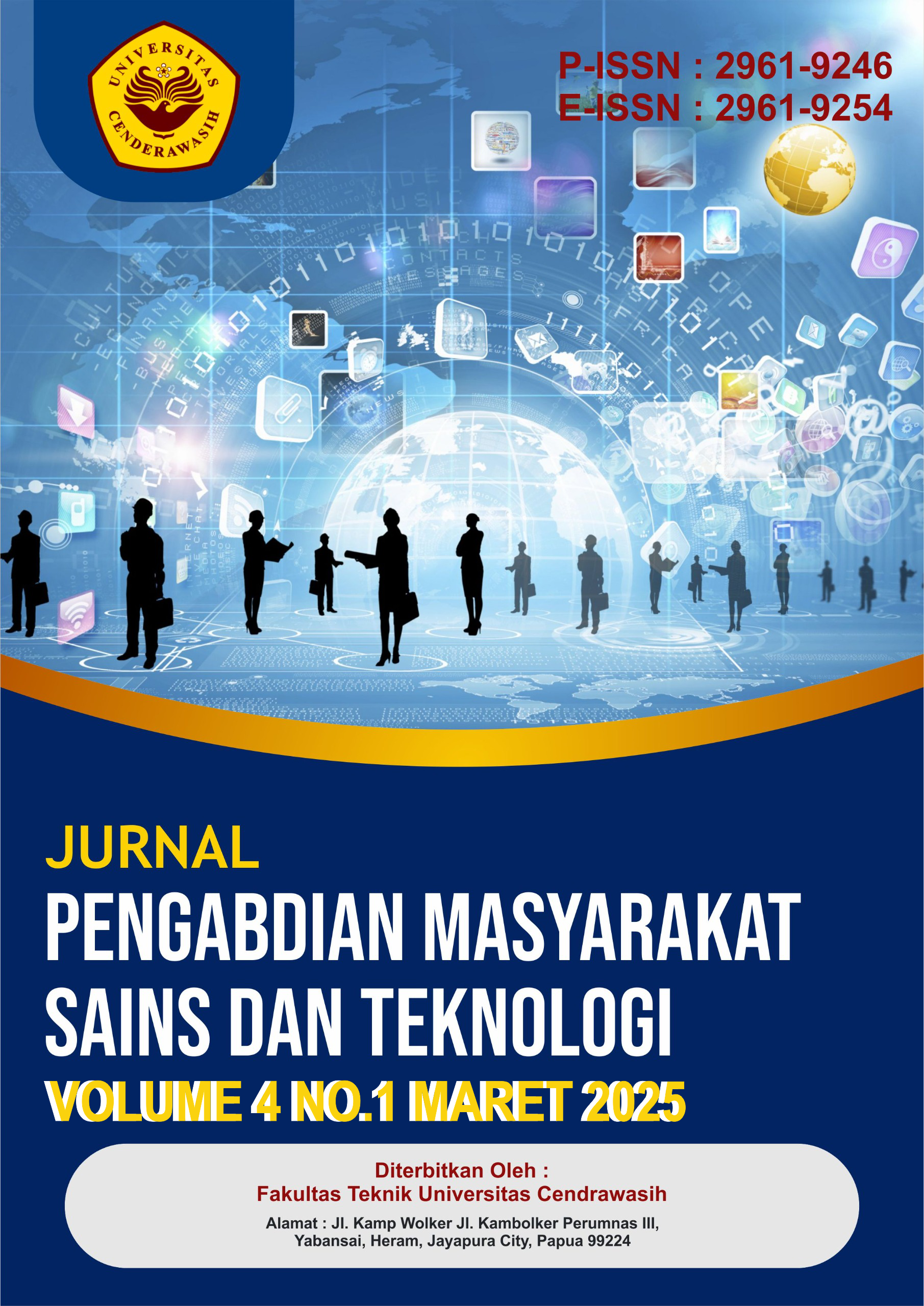Kontruksi Penanganan Bencana Tanah Longsor di Daerah Jemaat Dok Tujuh Jayapura
DOI:
https://doi.org/10.58169/jpmsaintek.v4i1.762Keywords:
Church, Construction, LandslideAbstract
The impact of the landslide is very worrying for the entire community and the congregation of Dock Seven because the land has experienced very large erosion and splits from the edge of the river to the wall of the church building which can result in the collapse of the building wall and church tower. For this reason, fast handling is needed to anticipate a greater impact by making gabions reinforced with ironwood as retaining pillars, accompanied by material compaction and re-casting. The purpose of this community service activity is to minimize losses and damage due to landslides, and to restore the function of the road access as a means of community activities every day. The construction of this landslide handling is made simple, namely by installing ironwood pillars along the landslide area starting from the boundary of the church building wall to the edge of the river flow, then placing gabions filled with gravel material from the bottom of the landslide hole to near the ground surface, then filled with coral material and re-cast as road access. For the river bank wall, it is done by casting and installing embankments until it passes the road surface so that the river water does not overflow onto the road when the rainfall is quite high. The gabion used is a type of thick wire measuring 2 m x 1 m x 1 m with a side wire diameter of 3.4 mm, a braided wire diameter of 2.7 mm, a hole/mesh size of 8 cm x 10 cm, a number of turns of 3 and a weight/sheet of 18 Kg. The ironwood used as a support is 5 cm x 5 cm in size. The embankment material uses coral rock, while the casting of the river bank embankment uses a 12 mm iron frame combined with 5 cm x 5 cm ironwood. The height of the embankment from the bottom of the river to the road surface is 3.80 meters where the height from the bottom to the river to the road surface is 3 meters and from the top of the road surface is 80 cm. With the implementation of this landslide handling construction, the entire community and the congregation of Dock Seven can use the road access again for daily needs.
References
Asdak, C. (2007). Hidrologi dan pengelolaan daerah aliran sungai. UNTAD Press.
Bronjongswis. (n.d.). Pedoman penanggulangan tanah longsor. Bronjongswis.com.
Cara Terbaru Mengatasi. (2014, Juli 24). Cara mengatasi tanah longsor di daerah rawan longsor.
Evita, M., Mahfudz, H., Suprijadi, S., Djamal, M., & Khairurrijal, K. (2010). Alat ukur curah hujan tipping-bucket sederhana dan murah berbasis mikrokontroler. Jurnal Otomasi Kontrol dan Instrumentasi, 2(2), 69–77.
Faizana, F., Nugraha, A. L., & Yuwono, B. D. (2015). Pemetaan risiko bencana tanah longsor Kota Semarang. Jurnal Geodesi Undip, 4(1).
Hardiyatmo, H. C. (2010). Teknik pondasi II. Universitas Gadjah Mada.
Hardiyatmo, H. C. (2012). Tanah longsor dan erosi. Gadjah Mada University Press.
Hardiyatmo, H. C. (2017). Perancangan perkerasan jalan dan penyelidikan tanah. Universitas Gadjah Mada.
Hidayat, T. (2017). Sistem pendeteksi dini longsor menggunakan teknologi Wireless Sensor Network (WSN). Institut Teknologi Padang.
Imanda, A. (2013). Penanganan permukiman di kawasan rawan bencana gerakan tanah studi kasus: Permukiman sekitar Ngarai Sianok di Kelurahan Belakang Balok, Kota Bukittinggi. Jurnal Perencanaan Wilayah dan Kota, 24(2), 141–156.
Kristianta, F. X., & Irawan, J. F. (2017). PKM Kecamatan Silo yang terdampak tanah longsor. Laporan Akhir Program Kemitraan Masyarakat, Universitas Jember.
Sudibyo, N. H. (2017). Pendeteksi tanah longsor menggunakan sensor cahaya. Jurnal TIM Darmajaya, 1(2), 218–226.
Wangsajaya. (n.d.). Pedoman penanggulangan tanah longsor. Wangsajaya Files.
Downloads
Published
Issue
Section
License
Copyright (c) 2025 Jurnal Pengabdian Masyarakat Sains dan Teknologi

This work is licensed under a Creative Commons Attribution-ShareAlike 4.0 International License.










